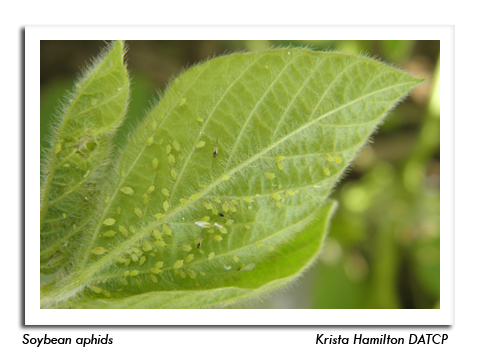
 |
|
|
Soybeans
Volume 62 Number 14 Date 08/03/2017 SOYBEAN APHID - Surveys conducted from July 27-August 2 found no economic populations at 40 sampled sites Densities were low in all fields, ranging from 0-34 aphids per plant and averaging less than five per plant. Only two fields, both in La Crosse County, had average counts above 20 aphids per plant. Although surveys indicate populations are low, aphid pressure usually intensifies at this time of year, and some fields could require treatment by mid-August. Soybean producers are reminded that insecticide treatment is not advised until the threshold of 250 aphids per plant on 80% of the plants throughout the field has been exceeded. Once again, field-wide average counts have not surpassed this level in any soybean field surveyed by DATCP this season. All soybeans should be examined next week to evaluate aphid densities. JAPANESE BEETLE - Defoliation is particularly prevalent this year. Japanese beetles are causing moderate to severe damage to soybean field margins in the southern and western counties and control treatments have been applied in some instances. Average defoliation rates in fields surveyed since late July have generally been below the 20% threshold for soybeans in the reproductive stages, but a few fields have developed economic defoliation levels in the range of 25-30%. SOYBEAN LEAFMINER - This red and black leafmining beetle was collected by a DATCP specialist from La Crosse County soybeans on August 1. Soybean leafminer has not previously been documented on soybeans in the state. UW-Madison Insect Research Collection (IRC) records show that the insect has been found in five other Wisconsin counties since 1975, including: Dane, Grant, Rock, Sauk and Waukesha. The species feeds on various legumes and most of the 15 IRC records were from tick trefoil. It is not known to cause economic soybean damage, though the beetles can transmit bean pod mottle virus and contribute to the spread of this pathogen in soybean fields. -- Krista Hamilton, DATCP Entomologist 


|
|
|